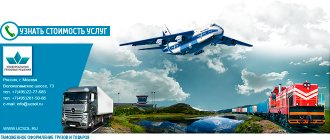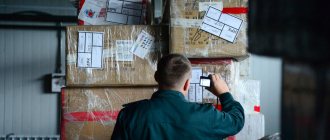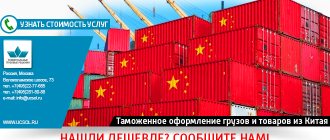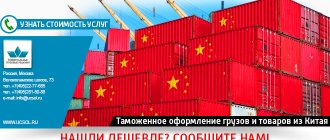With the introduction of product labeling, the importer is faced with the task of applying the label to the product and putting it into circulation. Today, almost every entrepreneur is faced with the problem of counterfeit goods. Stores also suffer from the sale of illegal goods, because buyers make them responsible for the sale of counterfeit goods.
In practice, tracking the entire process of producing counterfeits turns out to be a labor-intensive task. In order to solve this problem, mandatory labeling of certain categories of goods is being introduced. Together with the STALOGISTIC company, we have prepared step-by-step instructions that will help you understand all stages of import to Russia, including the preparation of goods and the labeling process.
Let's consider the main stages of importing goods to Russia:
Finance
After agreeing on all commercial requirements for importing goods, it is necessary to discuss financial issues with the supplier, which should cover three main points:
- opening a foreign currency account;
- agreement between the counterparty and the bank;
- advance payment.
It is important to remember that you should not neglect checking the reliability of the counterparty. Failure by the supplier to fulfill its obligations in good faith may result in administrative fines for the importer.
Certification
Having made sure of the reliability of the importer and having previously agreed on the financial terms, it is necessary to move on to the next step - certification. In Russia, certification of imported products is carried out in accordance with established schemes within the framework of national legislation and/or within the framework of technical regulations of the Customs Union and/or technical regulations of the EAEU. The certification stage must include:
- delivery of samples and/or samples for certification;
- Customs declaration;
- transfer of samples and/or specimens to certification bodies;
- obtaining a certificate / declaration of conformity.
bonded warehouse
Shelf life in a customs warehouse
The maximum storage period in a customs warehouse (under the “ import-70 ” customs procedure) is 180 days. In accordance with paragraph 2 of Article 218 of the Customs
, goods whose shelf life is less than
180 days
cannot be placed under the
customs warehouse .
Customs warehouses of Russia
Despite the existing register of customs warehouses , 90% of the information presented in the register is not relevant. It just so happens that information about customs warehouses is very poorly updated and sometimes it is simply impossible to find the required customs warehouse in the city you need. Placing goods in a customs warehouse is not as problematic as finding a working warehouse. If you have a need for customs clearance of the import 70 procedure and placement of goods in a customs warehouse, feel free to contact the specialists of our company!
Customs warehouse services
There are three most common customs warehouse services , which are the motive for searching for the above warehouse on the Internet:
- placement of goods without paying customs duties;
- labeling of goods in a customs warehouse;
- storage of seized cargo.
Customs warehouse Vladivostok
Our company provides customs clearance services (Import 70) and the provision of customs warehouse services in Vladivostok . Our company is the only customs representative capable of offering services for customs clearance procedures, customs warehouse and placement of cargo in a customs warehouse for storage and labeling (and so on).
Important: goods can be stored in a customs warehouse , but within a strictly specified period and only those goods whose shelf life is at least 180 days.
Import 70 Customs warehouse
Import 70 A customs warehouse is one of the most popular services in 2021, since labeling of goods is already mandatory, many import goods without labeling and only customs warehouses (on the territory of the Customs Union) label goods . Marking goods in a customs warehouse is the only way to mark goods that were imported without it and not released by customs authorities.
Bonded warehouse. Storage cost
The cost of storing goods in a customs warehouse depends on many factors, such as the weight and specific characteristics of the cargo. Also, the cost of storage in a customs warehouse depends on the customs warehouse itself. For example: there is a customs warehouse in Piskarevsky , there is a customs warehouse in Sheremetyevo , there is a customs warehouse in Novorossiysk , a customs warehouse in Bryansk , a customs warehouse in Voskhod Shushary , a customs warehouse in Bronka , Lyublino , a customs warehouse in the Moscow region , a customs warehouse in Vladivostok and many others.
Marking "Honest sign"
The next important step when importing is registering the goods through the national product labeling system - “Honest Mark”. The labeling is designed to protect buyers from counterfeit, low-quality products, entrepreneurs from unfair competition, and the state from unscrupulous taxpayers. The national labeling system “Honest Mark” was created to ensure transparency of all processes - from production and logistics to sales tracking. Each movement of goods is transferred to the marking system; it is impossible to fake the code thanks to the crypto technologies used. The labeling process should include:
1) registration in the “Honest Sign” system;
2) description of the product in the national catalog;
3) ordering marking codes;
4) applying a marking code to the product;
5) preparation and transmission of the application report:
- report to the “Honest Sign” system;
- report in the Declaration of Goods.
6) obtaining/checking the GTIN code (EAN 13).
Logistics
The logistics stage is one of the most important when importing goods. At this stage, you need to take into account many nuances related to the transportation and verification of goods.
Transport:
- choice of carrier;
- choice of delivery route;
- selection of additional options along the route.
Before delivering the goods to the consumer, the goods are delivered to temporary storage warehouses. If a product does not meet certain standards, it will be kept in the warehouse for a certain fee. As a result, the goods will be declared and delivered to the consumer, or will be disposed of, if necessary. Such a buffer (warehouse) is necessary so that the customs authorities have time to inspect the goods and make a decision on its import.
Customs warehouse to the EAEU border:
Before goods arrive at a customs warehouse to the border in the EAEU, you will need:
- preparation of transport documentation;
- additional processing of goods if the supplier has not done this in advance;
- marking in accordance with the Technical Regulations of the Customs Union (EAC);
- mandatory marking Honest mark;
- actual control of the goods;
- verification of goods with accompanying documents.
When importing goods into the customs territory of the Eurasian Economic Union, sequential customs operations are established. An important point for the next passage of goods to the customs warehouse of the Russian Federation is the mandatory preparation and submission of declaration IM70.
This stage covers:
- simple assembly operations;
- sampling and/or samples of goods;
- preparing goods for sale and transportation;
- labeling of goods in accordance with the Technical Regulations of the Customs Union (EAC).
- mandatory Honest Mark marking;
- packaging/repackaging.
A military expert spoke about the capabilities of the S-70 Okhotnik drone
The Okhotnik UAV is a key development in the field of unmanned aircraft for our aerospace forces. Military expert Viktor Murakhovsky told Izvestia about this on Tuesday, December 14.
“Hunter” in the fifth generation: Su-57 and drones will be used together
Squadrons of fighters and heavy drones will be able to control territories of thousands of kilometers
“This vehicle will play the role of a light multirole fighter. It can conduct reconnaissance, provide target designation, strike ground targets, fight enemy air attack weapons, and patrol. It is designed so that it can solve problems both independently and as part of mixed formations together with manned vehicles,” he explained.
Murakhovsky noted that the drone is made with elements of artificial intelligence; it will be possible to set general tasks for it, which the drone can perform independently. For example, according to a military expert, “Okhotniki” can become the advanced echelon of units and formations of operational-tactical aviation.
“They will be needed when opening and suppressing air defenses, when striking enemy troops that are well covered by air defenses and enemy fighters. In such operations, stealth and modifications that ensure it are important,” he concluded.
Earlier that day, Russian Deputy Defense Minister Alexey Krivoruchko announced that the Novosibirsk Aviation Plant (NAZ) named after Chkalov had rolled out the S-70 Okhotnik. According to him, it records the completion of the assembly. The sample is fully equipped with the necessary equipment and is preparing to perform its first flight.
This is the first drone equipped with a flat jet nozzle. The drone is distinguished by the fact that it is extremely difficult to detect using radar methods. It is expected that the S-70 Okhotnik unmanned bomber will enter service with the Russian army only in 2024.
In February, test pilot Evgeny Frolov spoke about the characteristics of the S-70 Okhotnik drone. He noted that the heavy strike drone is capable of hitting targets on command from a Su-57 fighter. According to him, in the near future this device will be controlled by an automated system without manual control.
The experimental model S-70 made its first flight on August 3, 2021, lasting more than 20 minutes. In the same year, the first joint 30-minute flight was carried out with the Su-57 fighter.
The Su-57 (formerly known as the PAK FA) is a fifth-generation multirole Russian fighter aircraft, its purpose is to destroy all types of air, ground and surface targets. Designed to replace the Su-27 heavy fighter in the Russian Aerospace Forces (VKS). The Su-57 made its first flight on January 29, 2010.
Customs clearance
The penultimate stage of import is passing customs control. Customs clearance of imported goods is carried out in several stages. The main ones are the following:
Choosing a declaration method:
- independently (using the electronic signature of the importer’s company);
- through a customs representative (broker).
Release for free circulation:
- preparation and submission of the Declaration of Goods (IM40);
- release of goods for free circulation on the territory of the Russian Federation.
Customs regimes
Goods are moved across the customs border of Uzbekistan in accordance with customs regimes. The customs regime is indicated in the customs declaration.
The most common mode for importing is mode 40 “Release for free circulation (import)” . Under this regime, goods imported into the customs territory remain in free circulation without the obligation to re-export them.
The goods are cleared for import only after customs duties have been paid. The procedure and conditions for placing goods are regulated by the Customs Code.
Before customs clearance, the goods are subject to customs control aimed at checking:
- goods;
- customs declaration, documents and information about goods;
- activities of the parties to the transaction.
After passing customs control, the goods are processed on the basis of the documents listed in the list approved by the Resolution of the Cabinet of Ministers dated July 20, 2015.
From July 1, 2021, the reliability of the declared information and the legality of the foreign trade activities of the parties to the transaction are verified after the goods are released into free circulation (mode 40). This significantly reduces time and simplifies the procedure for customs clearance of goods.
Goods registered under regime 70 “Temporary storage” are temporarily (up to 60 calendar days) stored under customs control without paying customs duties. This regime is usually applied if not all conditions for registration of regime 40 are met. For example, the necessary documents are missing, customs duties have not been paid, etc. The procedure and conditions for placing goods in the temporary storage regime are regulated by the Customs Code.
When placing goods in mode 70, a short customs declaration is drawn up in accordance with the Customs Code and the Instructions on the procedure for filling out a cargo customs declaration. There is no charge for customs clearance.
In mode 74 “Customs warehouse” , goods imported into the customs territory are stored under customs control in a customs warehouse without paying customs duties.
With the permission of the customs authority, goods may be stored in other places. This rule applies when the goods have specific characteristics (dimensions, special storage conditions, etc.), and therefore cannot be placed in a customs warehouse. To place goods in mode 74, the customs declaration and shipping documents are submitted to the customs authority.
One of the conditions is to ensure payment of customs duties for customs clearance and storage of goods.
The following security options are possible:
- depositing funds into the treasury personal account of the customs authority;
- pledge of goods;
- providing a bank guarantee;
- insurance of the obligation to pay customs duties;
- surety
When placing a product in mode 74:
- the customs declaration and shipping documents are presented;
- fees are paid for customs clearance and storage of goods.
Goods can remain under the customs regime of a customs warehouse for up to 3 years.









